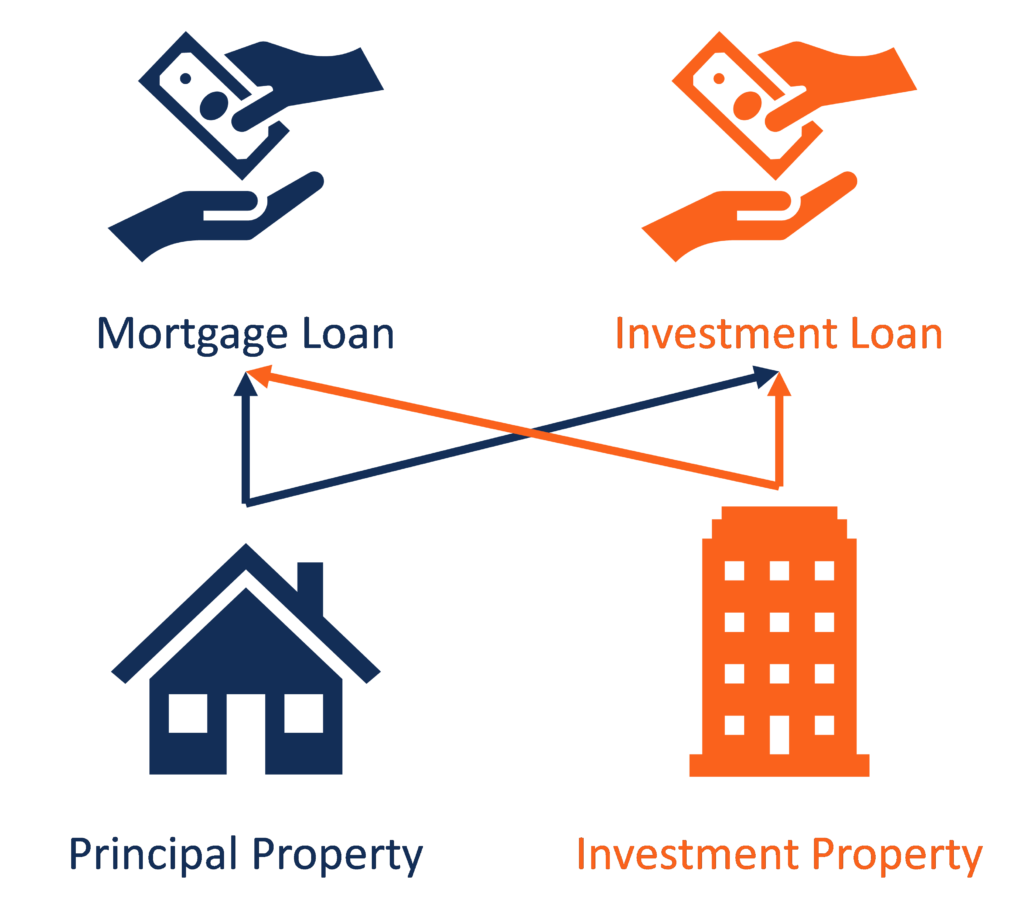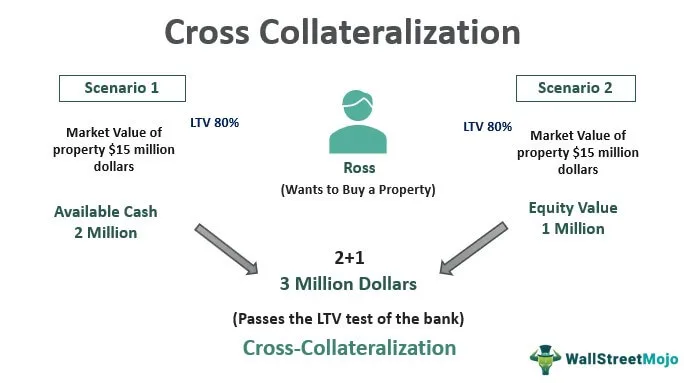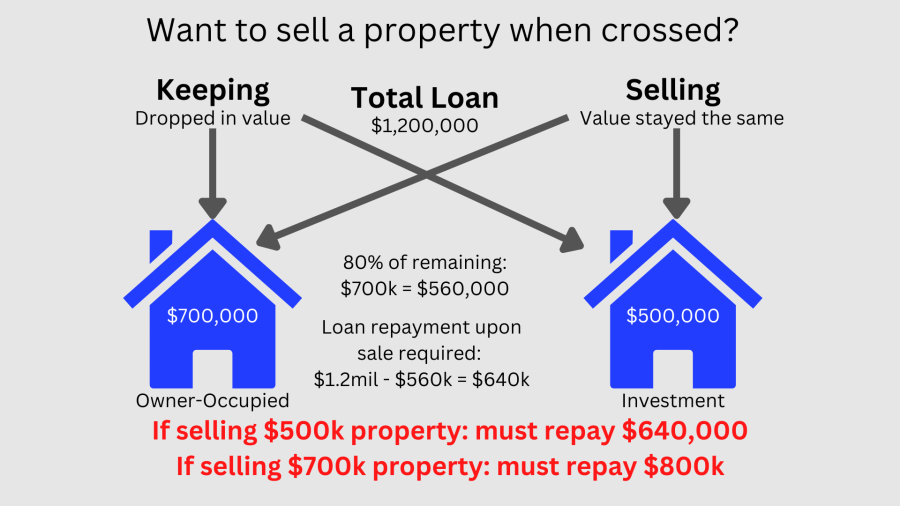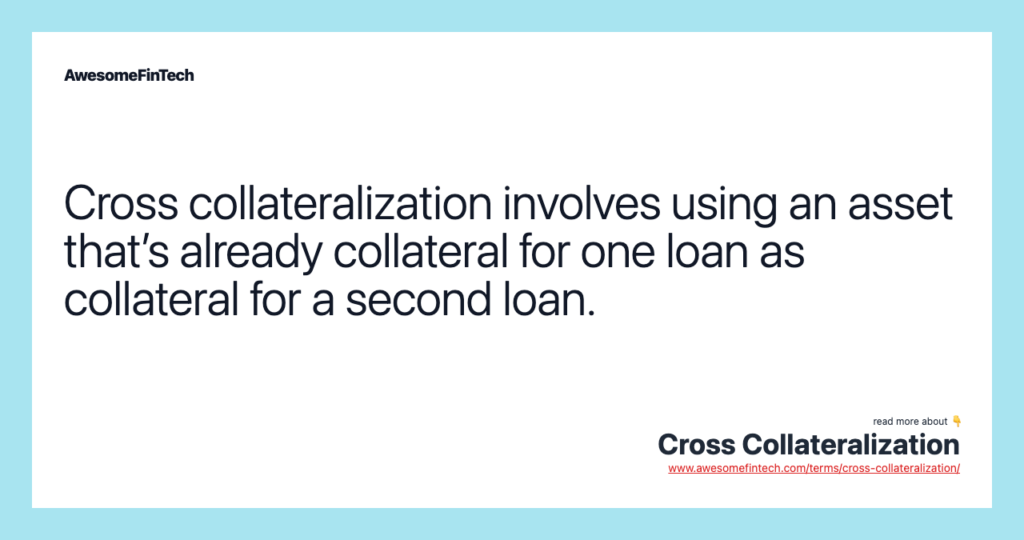In the realm of real estate financing, hard money lenders often employ a strategy known as cross-collateralization in conjunction with blanket loans. These innovative techniques allow borrowers to secure multiple properties as collateral for a single loan, maximizing their borrowing potential and minimizing risk for the lender. By exploring the inner workings of cross-collateralization and blanket loans, individuals seeking financing can gain a deeper understanding of how these concepts can be utilized to their advantage. Whether you’re a seasoned real estate investor or a first-time borrower, familiarizing yourself with the intricacies of these strategies will empower you to make informed decisions and navigate the lending landscape with confidence.

Understanding Cross-Collateralization
Definition of Cross-Collateralization
Cross-collateralization is a financial strategy commonly used in hard money lending. It involves using multiple properties as collateral for a single loan. In this arrangement, the lender has the right to seize and sell any or all of the properties in the event of default by the borrower. The proceeds from the sale of the properties are then used to repay the outstanding loan balance. Cross-collateralization provides additional security for the lender as it reduces the risk of default.
Purpose of Cross-Collateralization in Hard Money Lending
The primary purpose of cross-collateralization in hard money lending is to mitigate the risk associated with lending to borrowers who may not meet traditional lending criteria. Hard money lenders often cater to borrowers who have poor credit history, irregular income, or unconventional sources of income. By using cross-collateralization, lenders are able to reduce their exposure to risk by securing the loan with multiple properties rather than relying solely on the borrower’s creditworthiness.
Advantages of Cross-Collateralization
One of the key advantages of cross-collateralization is that it allows borrowers to leverage their existing real estate holdings to access additional financing. By securing the loan with multiple properties, borrowers can potentially borrow larger loan amounts than they would be able to with traditional financing options.
From the lender’s perspective, cross-collateralization provides an added layer of security. In the event of default, the lender has the ability to sell any or all of the collateral properties to recover their investment. This reduces the risk of loss for the lender, making it a more attractive option for financing high-risk borrowers.
Disadvantages of Cross-Collateralization
While cross-collateralization offers benefits for both borrowers and lenders, it also carries certain disadvantages. One of the main drawbacks is the potential loss of individual property control for the borrower. By pledging multiple properties as collateral, the borrower may have limited freedom to sell or refinance any of the properties without the lender’s approval. This can restrict the borrower’s financial flexibility and limit their ability to make strategic decisions regarding their real estate investments.
Another disadvantage is the increased risk of loss for the borrower. If one of the properties used as collateral depreciates significantly in value or becomes uninhabitable, the borrower may face difficulties in refinancing or selling the property due to its ties to the cross-collateralized loan. Furthermore, the borrower may be held responsible for any shortfall in the event of a forced sale of the collateral properties.
How Cross-Collateralization Works
Identifying Collateral Properties
When using cross-collateralization, it is important to identify the properties that will be used as collateral for the loan. These properties should have sufficient equity to meet the lender’s requirements and provide adequate security for the loan. The lender will typically conduct a thorough evaluation of each property to determine its value and equity position.
Determining Combined Loan-to-Value (CLTV) Ratio
The combined loan-to-value (CLTV) ratio is a crucial factor in cross-collateralization. It represents the total loan amount in relation to the combined value of all the collateral properties. Lenders typically have specific CLTV requirements that borrowers must meet in order to qualify for cross-collateralization. A higher CLTV ratio indicates a greater risk for the lender, while a lower ratio indicates a more secure position.
Allocating Loan Amounts to Each Property
Once the collateral properties have been identified and the CLTV ratio has been determined, the lender will allocate the loan amounts to each property. The allocation is based on the value, equity, and risk associated with each property. This ensures that the loan is properly secured and that each property provides proportional collateral for the borrowed funds.
Legal Documentation and Agreement
To formalize the cross-collateralization arrangement, both the borrower and the lender must enter into a legally binding agreement. This agreement outlines the terms and conditions of the loan, including the properties used as collateral, the loan amounts allocated to each property, and the rights and responsibilities of both parties. It is essential for borrowers to carefully review and understand the terms of the agreement before signing to ensure that they are comfortable with the cross-collateralization arrangement.
Benefits and Risks of Cross-Collateralization
Increased Borrowing Power
One of the main benefits of cross-collateralization is the increased borrowing power it offers borrowers. By using multiple properties as collateral, borrowers can access larger loan amounts than they would typically qualify for with traditional financing options. This can be particularly advantageous for real estate investors who are looking to expand their portfolio or undertake larger projects.
Flexible Repayment Options
Another advantage of cross-collateralization is the flexibility it provides in terms of repayment options. By securing the loan with multiple properties, borrowers may have the ability to choose from different repayment structures. For example, they may opt to sell one of the collateral properties to repay a portion of the loan, or they may choose to refinance a single property to generate additional funds for loan repayment. This flexibility allows borrowers to tailor their repayment strategy to best suit their financial circumstances.
Risk of Loss for Multiple Properties
One of the significant risks associated with cross-collateralization is the potential loss of multiple properties in the event of default. If the borrower fails to meet the loan obligations and the lender decides to initiate foreclosure proceedings, all the collateral properties may be subject to seizure and sale. This can have severe consequences for the borrower, who may lose not only the property in default but also any other properties pledged as collateral.
Loss of Individual Property Control
Another key risk of cross-collateralization is the loss of individual property control for the borrower. Once properties are cross-collateralized, the borrower may have limited freedom to sell or refinance any of the properties without obtaining the lender’s approval. This lack of control can restrict the borrower’s ability to make independent decisions regarding their real estate investments, potentially impacting their overall financial goals and strategy.
Overview of Blanket Loans
Definition of Blanket Loans
Blanket loans are a type of financing specifically designed for real estate investors and developers. They allow borrowers to use multiple properties as collateral for a single loan. Similar to cross-collateralization, blanket loans provide lenders with greater security by spreading the risk of default across multiple properties.
Application of Blanket Loans in Hard Money Lending
Blanket loans are commonly used in hard money lending to provide financing for real estate investors who own multiple properties. Instead of securing each property individually, borrowers can use a blanket loan to consolidate their debt and streamline their borrowing process. This simplifies the loan application and approval process, saving time and effort for both the borrower and the lender.
Use of Multiple Properties as Collateral
The key feature of blanket loans is the use of multiple properties as collateral. Borrowers can leverage their real estate portfolio by pledging all or a selected group of properties as collateral for the loan. This helps to reduce risk and increase the lender’s confidence in the borrower’s ability to repay the loan.
Key Features of Blanket Loans
Blanket loans have several key features that distinguish them from traditional loans. Firstly, they allow borrowers to access financing based on the combined value of multiple properties rather than relying on the value of each individual property. This can be advantageous for borrowers with multiple properties that may have relatively low value individually but collectively represent a substantial asset.
Secondly, blanket loans offer greater flexibility in terms of property management. Borrowers can buy, sell, or refinance properties within the blanket loan structure without the need for lender approval. This provides borrowers with greater control and freedom in managing their real estate portfolio.
Lastly, blanket loans often have non-recourse provisions, which means that the lender’s ability to recover the loan in the event of default is limited to the collateral properties and does not extend to the borrower’s personal assets. This can provide borrowers with an added layer of protection and mitigate their personal liability.

Working Mechanism of Blanket Loans
Aggregating Property Values for Loan Evaluation
When evaluating a blanket loan application, lenders typically aggregate the values of the properties being used as collateral. This helps to determine the overall value of the real estate portfolio and assess the borrower’s ability to repay the loan. The lender may also consider factors such as location, condition, and marketability of the properties.
Determining Combined Loan-to-Value Ratio (CLTV)
Similar to cross-collateralization, blanket loans also involve the calculation of the combined loan-to-value (CLTV) ratio. This ratio represents the total loan amount in relation to the combined value of the collateral properties. Lenders generally have specific CLTV requirements that borrowers must meet in order to be eligible for a blanket loan.
Loan Disbursement and Repayment Terms
Once the blanket loan is approved, the loan amount is typically disbursed in stages based on the borrower’s needs and the progress of the project. Repayment terms can vary depending on the specific terms negotiated between the borrower and the lender. The borrower may have the option to make interest-only payments during the construction phase and then transition to a traditional amortizing payment schedule upon completion of the project.
Legal Documentation and Agreement
To formalize the blanket loan arrangement, both the borrower and the lender must enter into a legal agreement. This agreement outlines the terms and conditions of the loan, including the properties used as collateral, the loan amount, repayment terms, and the rights and obligations of both parties. It is important for borrowers to carefully review and understand the terms of the agreement to ensure that they are comfortable with the blanket loan structure.
Advantages and Disadvantages of Blanket Loans
Efficiency in Financing Multiple Properties
One of the main advantages of blanket loans is the efficiency they offer when financing multiple properties. By consolidating multiple loans into a single loan, borrowers can simplify their financial management and reduce administrative burdens. This can be particularly valuable for real estate investors who own a portfolio of properties and prefer to have a single lender relationship.
Streamlined Loan Application Process
Blanket loans also provide a streamlined loan application process. Instead of applying for individual loans for each property, borrowers only need to go through one application process for the blanket loan. This can save time and effort for both the borrower and the lender, making the financing process more efficient.
Increased Risk Exposure
One of the potential disadvantages of blanket loans is the increased risk exposure for the borrower. By using multiple properties as collateral, the borrower may face the risk of losing all the properties in the event of default. This can be particularly concerning if the borrower’s real estate portfolio is highly concentrated or if there are properties with significant market or structural risks.
Dependency on Market Conditions
Another potential disadvantage of blanket loans is the dependency on market conditions. If there is a downturn in the real estate market or a decline in property values, borrowers may face challenges in refinancing or selling properties within the blanket loan arrangement. This can limit their ability to access funds for future investments or to exit existing investments.

Comparing Cross-Collateralization and Blanket Loans
Similarities Between Cross-Collateralization and Blanket Loans
Cross-collateralization and blanket loans both involve the use of multiple properties as collateral for a single loan. They provide lenders with increased security by spreading the risk across multiple properties. Additionally, both strategies allow borrowers to access larger loan amounts and offer flexibility in loan repayment options.
Differences Between Cross-Collateralization and Blanket Loans
While cross-collateralization and blanket loans share similarities, there are some key differences between the two approaches. Cross-collateralization involves securing a loan with multiple properties, regardless of whether they are related or unrelated. In contrast, blanket loans specifically target real estate investors who own multiple properties and seek to consolidate their debt into a single loan.
Furthermore, cross-collateralization typically involves allocating loan amounts to each property based on its value and equity, whereas blanket loans may consider the combined value of the properties rather than individual allocations. Blanket loans also offer greater flexibility in property management, allowing borrowers to buy, sell, or refinance properties within the loan structure without lender approval.
Applicability in Hard Money Lending
Suitable Borrowers for Cross-Collateralization and Blanket Loans
Cross-collateralization and blanket loans are most suitable for borrowers who may not meet traditional lending criteria but have substantial real estate holdings. These strategies can provide an avenue for financing when conventional lenders may be unwilling or unable to provide funding. Real estate investors, property developers, and individuals with a portfolio of real estate assets can benefit from these approaches.
Types of Real Estate Investments Ideal for These Approaches
These approaches are particularly well-suited for real estate investments that involve multiple properties, such as commercial real estate developments, real estate portfolios, and property rehabilitation projects. By utilizing cross-collateralization or blanket loans, borrowers can access the necessary funds to acquire, improve, or expand their real estate investments.
Considerations for Hard Money Lenders
Hard money lenders should carefully evaluate the potential risks and rewards associated with cross-collateralization and blanket loans. While these strategies offer increased security, lenders should assess the borrower’s financial position, creditworthiness, and the quality and marketability of the collateral properties before extending financing. It is crucial for lenders to conduct proper due diligence to mitigate potential risks and ensure a mutually beneficial lending arrangement.

Underwriting Process for Cross-Collateralization and Blanket Loans
Evaluation of Borrower’s Creditworthiness
When underwriting cross-collateralization and blanket loans, lenders typically consider the borrower’s creditworthiness, although it may carry less weight than in traditional lending. Other factors, such as the value and condition of the collateral properties, the borrower’s real estate experience, and their ability to demonstrate a viable repayment plan, play a more significant role in the underwriting process.
Assessment of Collateral Properties
The evaluation of the collateral properties is a crucial step in the underwriting process. Lenders will assess the value, marketability, condition, and location of each property to determine its suitability as collateral. Appraisals, property inspections, and market analysis may be conducted to gather the necessary information for this assessment.
Determination of Combined Loan-to-Value Ratio (CLTV)
The determination of the combined loan-to-value (CLTV) ratio is a fundamental part of underwriting cross-collateralization and blanket loans. Lenders set specific CLTV requirements to manage their risk exposure. The CLTV ratio helps to determine the appropriate loan amount that can be extended based on the total value of the collateral properties.
Structuring the Loan Terms
The final step in the underwriting process is structuring the loan terms. Lenders will consider various factors, including the borrower’s financial situation, project feasibility, repayment capability, and desired loan structure, to develop favorable loan terms. These terms will typically include the loan amount, interest rate, repayment schedule, and any additional conditions or provisions specific to the cross-collateralization or blanket loan arrangement.
Conclusion
Balancing risk and reward is a crucial aspect of hard money lending, and cross-collateralization and blanket loans provide viable options for both borrowers and lenders. These approaches offer increased borrowing power, flexibility in loan repayment, and greater security for lenders. However, they also come with certain risks, such as loss of individual property control and increased exposure to market fluctuations.
Choosing the right approach for your investment strategy requires careful consideration of your financial goals, risk tolerance, and real estate holdings. Cross-collateralization and blanket loans can provide opportunities for financing real estate investments that may not be possible through traditional means. However, it is essential to thoroughly assess the terms and implications of these approaches to ensure they align with your investment objectives and meet your financial needs. By understanding how cross-collateralization and blanket loans work, you can make informed decisions to support your real estate ventures.




